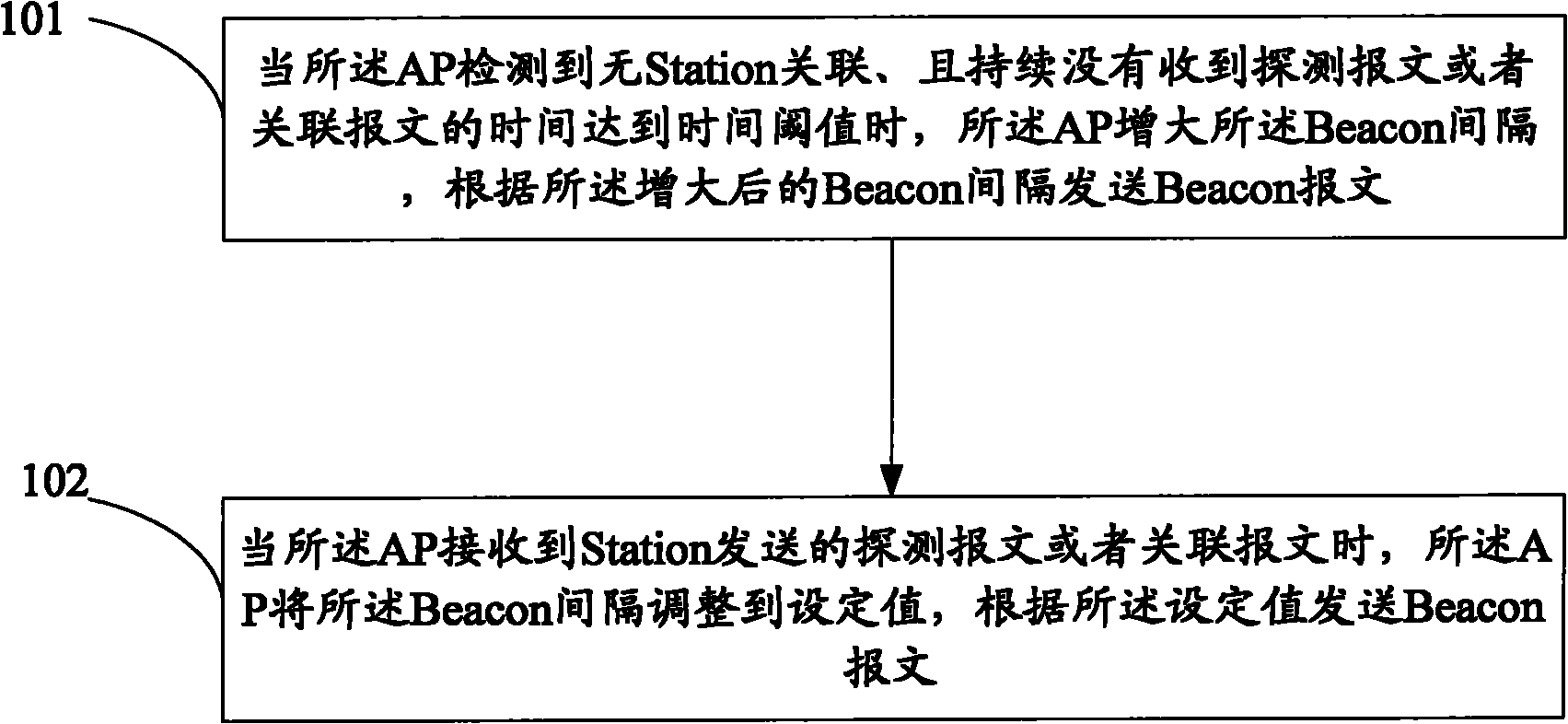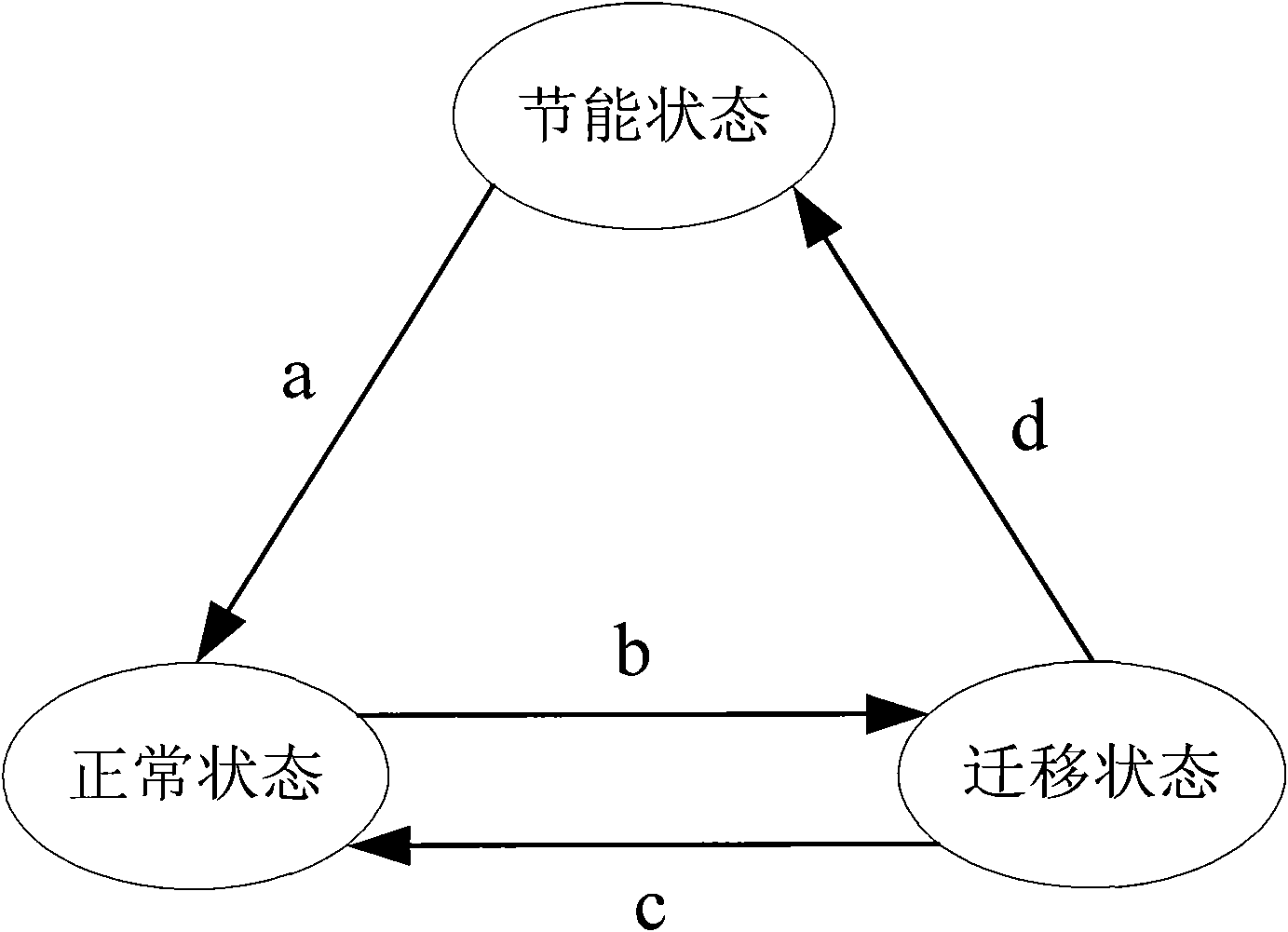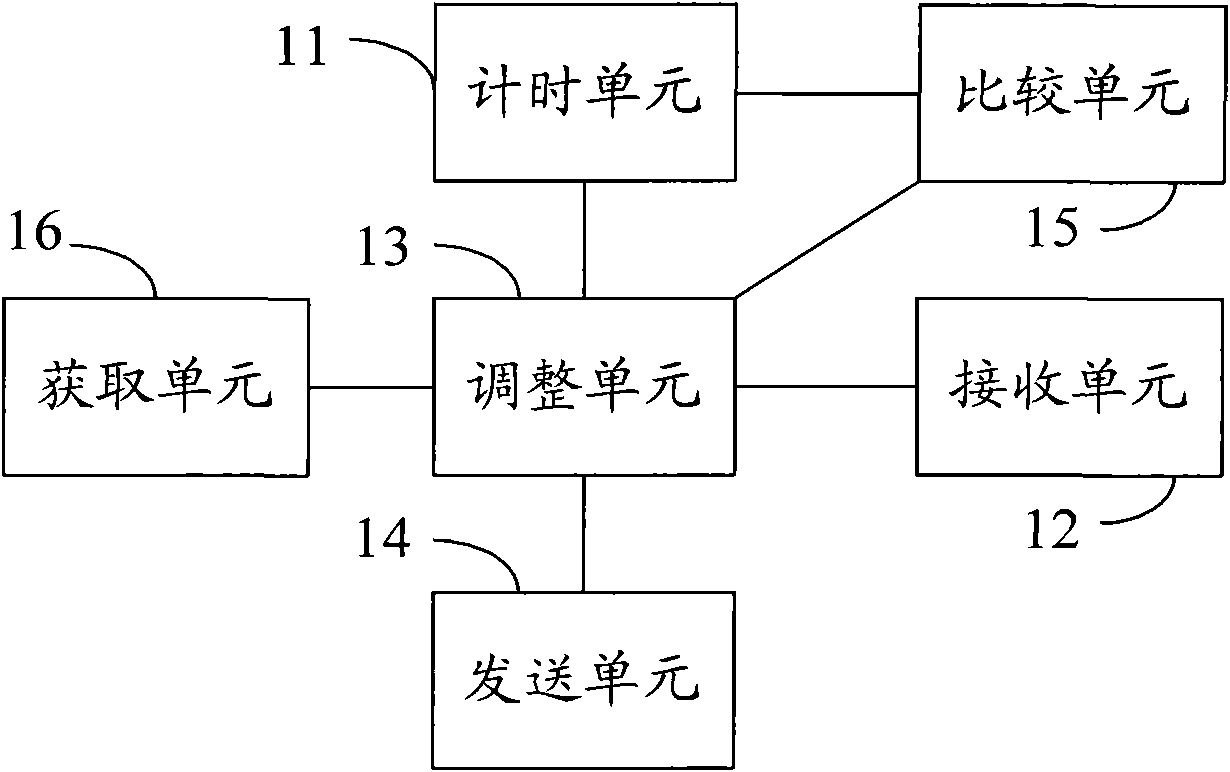Wireless access point (AP) and AP energy saving method
A wireless access point, wireless network technology, applied in the field of communication, can solve the problems of high power consumption, no provision, AP energy saving has not received due attention, etc., to achieve the effect of reducing transmission frequency and power consumption
- Summary
- Abstract
- Description
- Claims
- Application Information
AI Technical Summary
Problems solved by technology
Method used
Image
Examples
Embodiment Construction
[0037] The working scenarios of the AP include station association and no station association. When an AP is associated with a station, the AP needs to complete a series of tasks such as packet forwarding, packet buffering, and clock synchronization. When there is no Station association on the AP, the AP needs to periodically send Beacon (guidance) messages to the outside world to announce the existence of the wireless network and facilitate user access. The interval for sending Beacon packets is called Beacon Interval for short, and its value can be configured by users within a certain range. For example, the minimum Beacon interval of an AP is 32ms and the maximum is 8191ms. The Beacon interval should not be too small. If it is too small, it will increase the burden on the system and occupy a large amount of additional channel resources. It should not be too large. If it is too large, it will affect the AP's data packet caching operation for the associated dormant Station. G...
PUM
 Login to View More
Login to View More Abstract
Description
Claims
Application Information
 Login to View More
Login to View More - R&D
- Intellectual Property
- Life Sciences
- Materials
- Tech Scout
- Unparalleled Data Quality
- Higher Quality Content
- 60% Fewer Hallucinations
Browse by: Latest US Patents, China's latest patents, Technical Efficacy Thesaurus, Application Domain, Technology Topic, Popular Technical Reports.
© 2025 PatSnap. All rights reserved.Legal|Privacy policy|Modern Slavery Act Transparency Statement|Sitemap|About US| Contact US: help@patsnap.com



